
New Jersey Laws Could Pave Way for More Reforms
|
Which side of the Hudson River you’re on means a “huge difference” for juvenile justice.
Juvenile Justice Information Exchange (https://jjie.org/tag/the-new-york-bureau/page/4/)

Which side of the Hudson River you’re on means a “huge difference” for juvenile justice.

NEW YORK — It was supposed to be just fun and games on that dreary, rainy September day 21 years ago. But child’s play in that stairwell quickly turned deadly when a shot was fired, with 13-year-old Nicholas Naquan Heyward Jr. the bullet’s target.

NEW YORK — This isn’t your typical prison photography. But it isn’t supposed to be.
As part of his Windows from Prison workshop, Mark Strandquist asks incarcerated individuals a simple question: “If you could have a window in your cell, what place from your past would it look out to?”
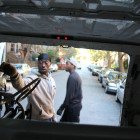
NEW YORK — Hunting curbside metal trash at dawn, brothers Luqman and Aje Stroud creep down the streets of eastern Brooklyn in a banged-up white van they call the White Ghost. Now in their mid-20s, they have been at this since they were in grade school.
It could be a family business if the city didn’t say it was against the law.
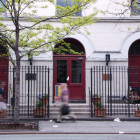
Since he was 16, Ivan Cabrera has been spending time at New Alternatives, a drop-in center for 16- to 24-year-olds who identify as lesbian, gay, bisexual and transgender — and homeless. He goes there almost every Sunday for a free meal, HIV testing and a talk with other clients and caseworkers.
Cabrera calls the people there his family.
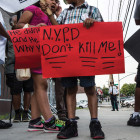
Family members of youngsters killed by New York City police are imploring the governor to enact a law that would create a special prosecutor to investigate such killings.
New York activists have argued for decades that the New York Police Department and the prosecutors’ offices in the five boroughs work together too closely to have them be honest arbiters in investigating police abuse.
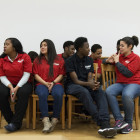
The Red Hook Youth Court trains teens to serve as jurors and judges to handle real-life low-level misdemeanors committed by their peers. The all-teen jury has the power to impose sanctions such as community service hours, workshops or essays.
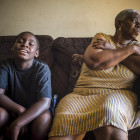
NEW YORK — Sending people to prison punishes not only criminals but their families, especially their children, participants in a program on prison photography say.
“It’s not just about offenders and victims,” said documentary photographer Gabriela Bulisova during the Thursday panel discussion hosted by the CUNY Graduate School of Journalism’s Department of Visual Journalism. “Many of the people affected are children.”

NEW YORK — Jason Pedreros is considered an adult in the eyes of the law. But at 18, he is still a teenager who, as a volunteer on a judicial panel, is deciding the fate of fellow youths in the New Jersey county where he lives.
Pedreros serves on the Juvenile Conference Committees (JCC) in Hudson County that review charges against underage New Jersey residents and make punitive and rehabilitative recommendations to the court. There are six- to nine-member committees in each of New Jersey’s 21 counties. In addition, many municipalities have their own. His handles north Bergen, west New York and Jersey City.
Charges are first reviewed by a juvenile intake probation officer and a Hudson County prosecutor, who decides which cases get sent to committees. First- or second-time minor offenses are eligible.
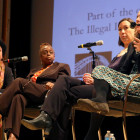
Just as the “superpredator” label had unfairly distorted perceptions of her young newspaper staff, writer Nell Bernstein said, youth incarceration as a whole is “a system custom-designed to erode humanity.”
“Once you put someone in an orange jumpsuit and put a label like ‘offender’ or ‘delinquent’ on him or her, it’s very easy to start thinking of that person as a different kind of child,” she said.